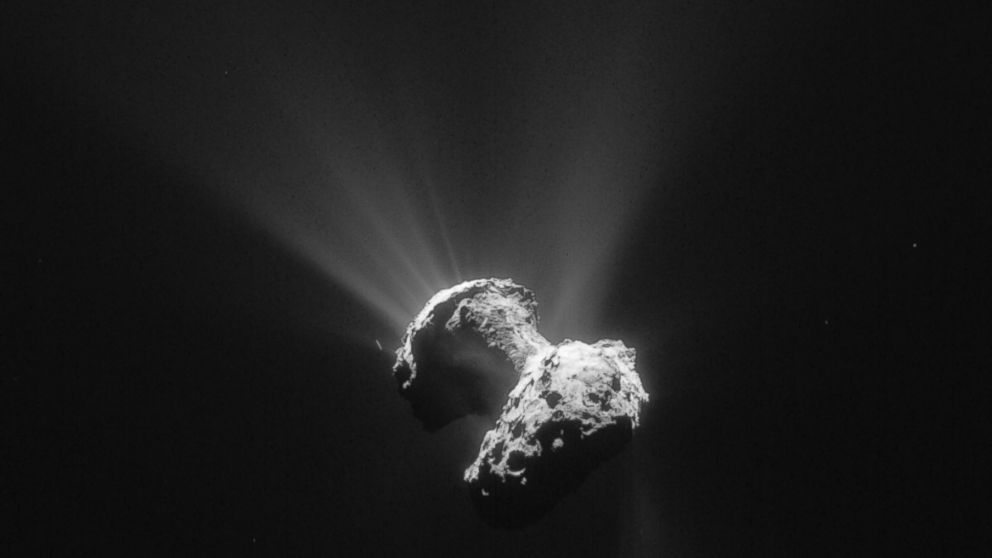Rosetta Probe Discovers Oxygen on Comet, Raising New Questions About How Solar System Formed
Discovery of oxygen raises new questions about how solar system formed.

— -- The European Space Agency’s Rosetta probe has detected molecular oxygen on Comet 67P, raising new questions about the origins of the solar system.
While oxygen atoms are abundant in the universe, finding molecular oxygen, known as O2, is a surprise. Using instruments aboard the Rosetta probe, which orbits the rubber duck-shaped comet, scientists discovered its existence in a halo around the comet, according to a paper published today in the journal Nature.
It’s unclear where the oxygen originated, according to researchers, but they said it is believed to be a remnant from when the comet formed billions of years ago, trapping the molecules in rock and ice.
André Bieler, a physicist at the University of Michigan in Ann Arbor and lead author of the paper, said he was surprised to find molecular oxygen on the comet in abundance because it is usually quick to react with other chemicals, forming water (H2O), carbon monoxide (CO) or carbon dioxide (CO2).
"As soon as we got close enough to the comet, we actually found it right away," Bieler said, according to Nature.
The discovery of the preserved molecular oxygen now raises the question of how it was able to remain in a pure state for billions of years, perhaps indicating the solar system may have been formed in a gentler way for the ice to never have undergone any significant temperature changes.
Bieler said he believes more experiments are needed as scientists determine how the discovery may change previous theories.
Rosetta made history Nov. 12 when its Philae lander touched down on the speeding comet, marking the culmination of a 10-year, 4 billion-mile journey. Rosetta has continued to orbit the 2.5-mile wide comet over the past year collecting data.